Ivan Čuk
Editorial
Sarita Bacciotti, Adam D.G., Baxter-Jones, Adroaldo Gaya, José Maia
MOTOR PERFORMANCE OF BRAZILIAN FEMALE ARTISTIC GYMNASTS: INSIGHTS VIA MULTILEVEL ANALYSIS
George Dallas, Alkmini Savvathi, Konstantinos Dallas, Maria Maridaki
THE EFFECT OF 6-WEEKS WHOLE BODY VIBRATION ON MUSCULAR PERFORMANCE ON YOUNG NON-COMPETITIVE FEMALE ARTISTIC GYMNASTS
Ole H. Hansen, Lars G. Hvid, Per Aagaard, Kurt Jensen
MECHANICAL LOWER LIMB MUSCLE FUNCTION AND ITS ASSOCIATION WITH PERFORMANCE IN ELITE TEAM GYMNASTS
Stefan Kolimechkov, Iliya Kiuchukov, Iliya Janev, Lubomir Petrov, Albena Alexandrova, Dilyana Zaykova, Emil Stoimenov
IMPACT OF GYMNASTICS TRAINING ON THE HEALTH-RELATED PHYSICAL FITNESS OF YOUNG FEMALE AND MALE ARTISTIC GYMNASTS
Toshiyuki Fujihara, Pierre Gervais, Gareth Irwin
HEAD-TOE DISTANCE AS A SIMPLE MEASURE TO EVALUATE AMPLITUDE OF CIRCLES ON POMMEL HORSE
Lucija Milčić, Kamenka Živčić, Tomislav Krističević
DIFFERENCES IN VAULT RUN-UP VELOCITY IN ELITE GYMNASTS
Jonas Rohleder, Tobias Vogt
EFFICACY OF WRIST STRATEGY COACHING ON HANDSTAND PERFORMANCES IN NOVICES: INVERTING EXPLICIT AND IMPLICIT LEARNING OF SKILL-RELATED MOTOR TASKS
William A. Sands, Madison K. Varmette, Gregory C. Bogdanis, Olyvia Donti, Bryce V. Murphy, Troy J. Taylor
COMPARISON OF BOUNCE CHARACTERISTICS ON THREE TYPES OF TRAMPOLINES
Miriam Kalichová, Petr Hedbávný, Barbora Pyrochtová, Jana Příhonská
COMPARISON OF ACTUAL AND PREDICTED ANTHROPOMETRIC CHARACTERISTICS OF CZECH ELITE GYMNASTS
Adriana Kaplánová
PERSONALITY OF GYMNASTS AND COPING STRATEGIES TO MANAGE STRESS
Anton Gajdoš
Short historical notes XV
Ivan Čuk
Editorial
Dear friends,
The European Union has changed its approach toward scientific publications and we have to respect the new guidelines. The most important guideline is that all scientific articles have to be openly accessible. While our journal already has open access to articles, we will try to number articles by digital object identifier (DOI) by the end of the year. It will be slightly more work, but generally we will still be able to publish three issues per year. At the end of May new journal evaluations have been published in SCOPUS. Unfortunately, our citation has been placed slightly lower than last year, but our SNIP indicator has risen and thus our journal is now in the second quarter of journals. An excellent result! In this issue, we have again ten articles by authors from Brazil, Portugal, Canada, Greece, Denmark (for the first time), Bulgaria (for the first time), Great Britain, Japan, Croatia, Germany, the USA, the Czech Republic and Slovakia. There is a variety of research fields and it is good to see that there is a lot of productive international cooperation among researchers. Among articles on gymnastics disciplines, most are dealing with the man and the women artistic gymnastics; we are proud that for the first time we have an article from TEAMGYM, a discipline that is gaining momentum in Europe. Anton Gajdoš prepared another article related to the history of gymnastics, refreshing our information on Albert Azarjan, an excellent Armenian (ex Soviet Union) gymnast. Please be welcome to Freiburg to 13th International Gymnastics Congress. Just to remind you, if you quote the Journal, its abbreviation on the Web of Knowledge is SCI GYMN J. I wish you pleasant reading and a lot of inspiration for new research projects and articles.
Sarita Bacciotti, Adam D.G., Baxter-Jones, Adroaldo Gaya, José Maia
MOTOR PERFORMANCE OF BRAZILIAN FEMALE ARTISTIC GYMNASTS: INSIGHTS VIA MULTILEVEL ANALYSIS
The aim of this research was to investigate individual and club-level variables that explain individual differences in gymnasts´ motor performance (MP). The sample was comprised of 249 female gymnasts (68 elite; 181 non-elite), aged between 9 and 20 years, split into four age categories: 9-10 years (n=98); 11-12 years (n=72); 13-15 years (n=64), and 16 and above (n=15). Gymnasts were from 26 Brazilian clubs, from six different states. The Talent Opportunity Program physical ability total test score was used to assess gymnasts’ MP, based on a battery of seven tests: handstand hold, cast, rope climb, press handstand, leg flexibility, leg lift, and 20 meter sprint. Anthropometric, body composition, biological maturation, and training history data were also collected, as were club dimensions, infrastructures, competitions, manpower, and availability of selection/talent programs. Data were analyzed using a multilevel modelling approach. Individual gymnast’ characteristics explained 39% of physical ability score variance from which 32% was related to the independent effects of age, competitive level, fat free mass, occurrence of menarche, and trainings hours per week (p < 0.05). Club characteristics explained 61% of gymnasts’ total variance in physical ability score; 96% of this amount was related to club dimension, manpower, and talent program. These results reinforce the relevant role of the contextual effects and highlight the need to invest in club infrastructures: ideally in coaches’ expertise and effective selection programs. Such investments should enable the enhancement and development of a gymnast’s careers during their lifetime involvement in training and competition. Keywords: physical fitness, performance, gym club.
George Dallas, Alkmini Savvathi, Konstantinos Dallas, Maria Maridaki
THE EFFECT OF 6-WEEKS WHOLE BODY VIBRATION ON MUSCULAR PERFORMANCE ON YOUNG NON-COMPETITIVE FEMALE ARTISTIC GYMNASTS
The purpose of this study was to investigate the effects of a 6-week whole body vibration-intervention on muscle performance and flexibility on gymnasts. Twenty-two young non-competitive-moderate trained gymnasts that volunteered to participate in the study separated into either the vibration group or the no vibration group according to their training regime. The vibration intervention consisted of a 6-week whole-body vibration, 3 times per week and involved eccentric and concentric squatting movements on a vibration platform with the participants performing three exercises on the vibration device whereas for the no vibration group vibration platform was turned off. Five performance tests (20m running speed, sit & reach test, squat jump, counter movement jump and single leg squat (right leg and left leg) were performed at the beginning of the intervention, and after the end of 6-week intervention program. According to the results significant interaction effect between group and time was found for the running speed and Squat Jump test. On the contrary, significant main effect were found were found for time on the running speed, Squat Jump, Counter movement jump and single leg squat. Conclusively, it has been reported that Whole body vibration is an effective method to improve Squat Jump performance in young non-competitive female artistic gymnasts. Keywords: explosive strength, intervention, gymnastics.
Ole H. Hansen, Lars G. Hvid, Per Aagaard, Kurt Jensen
MECHANICAL LOWER LIMB MUSCLE FUNCTION AND ITS ASSOCIATION WITH PERFORMANCE IN ELITE TEAM GYMNASTS
TeamGym (TG) differs from individual gymnastics as it is performed in teams including 6-12 participants competing in acrobatic performance in three disciplines: trampette jumping, tumbling track jumping, and floor exercises. The physical demands required by TG athletes largely remain unknown, and likely are dictated by the specific disciplines and equipment used. This study aimed at describing physiological capacity by investigating mechanical lower limb muscle function and its association with TG performance in 24 senior elite (12 males, 12 females) team gymnasts. Methods: Anthropometrical data as well as 25m sprint ability, repetitive jumps (RJ), countermovement jumping (CMJ), drop jumping from a height of 48cm (DJ48), maximal isometric leg press muscle strength (MVC) and rate of force development (RFD) were measured. Results: Significant sex differences (p< 0.05) were observed for all variables, except MVC. Total sprint times were 3.36±0.1s in males vs. 3.70±0.1s in females, CMJ height 0.51±0.05 vs. 0.41±0.03m, DJ48 rebound height 0.43±0.06 vs. 0.34±0.06m, with no difference in concentric peak power production between CMJ and DJ48. MVC was 38.3±9.9N/kg in males vs. 36.4±9.2N/kg in females. In female gymnasts, correlations (r2=0.41-0.46, p< 0.05) were found between trampette and tumbling performance and sprint ability. In male gymnasts, correlations (r2=0.44, p< 0.05) emerged between trampette performance and relative RFD (%MVC/s). Conclusions: Moderate associations were found between mechanical lower limb muscle function and functional tumbling performance in male and female TeamGym, indicating that performance in elite TeamGym also relies on factors other than isolated mechanical muscle function. Keywords: TeamGym, sprint, jumping, maximal strength, RFD, acrobatic performance.
Stefan Kolimechkov, Iliya Kiuchukov, Iliya Janev, Lubomir Petrov, Albena Alexandrova, Dilyana Zaykova, Emil Stoimenov
IMPACT OF GYMNASTICS TRAINING ON THE HEALTH-RELATED PHYSICAL FITNESS OF YOUNG FEMALE AND MALE ARTISTIC GYMNASTS
Artistic gymnastics can be practised from an early age and develops the main components of physical fitness. The aim of this study was to assess the physical fitness of young competitive artistic gymnasts from Bulgaria. A total of 161 gymnasts (81 females and 80 males), who were divided into three groups (from 5-8, 9-11, and 12-15 years of age), with sports experience from 12 to 180 months, took part in this study. All of the participants completed the extended version of the Alpha-Fit physical fitness test battery, with European norms being applied to calculate percentile scores for each fitness test. The height-for-age percentile scores in the groups between the ages of 9-11 and 12-15 were significantly lower from the 50th percentile of the international norms, both for male and female gymnasts. Gymnasts showed substantially lower body fat, and only one gymnast was assessed as overweight, with two being classified as obese. The percentile scores of the standing long jump and the 4x10 m SRT in the groups were significantly greater than the 50th percentile of the available European norms. The percentile scores of the VO2max in all female groups were also higher than the 50th percentile of the European norms, while those for males did not differ from the 50th percentile, except in the 5-8 age range. Artistic gymnastics improves the physical fitness components and positively influences children’s physical development. Both female and male artistic gymnasts had better physical fitness in most parameters, in comparison with their peers. Keywords: physical fitness, artistic gymnasts, gymnastics, alpha-fit.
Toshiyuki Fujihara, Pierre Gervais, Gareth Irwin
HEAD-TOE DISTANCE AS A SIMPLE MEASURE TO EVALUATE AMPLITUDE OF CIRCLES ON POMMEL HORSE
To develop scientifically-valid tools to monitor performance in practice, a critical question is what to measure. On pommel horse, the importance of fundamental skills called circles is uncontroversial, and one of the key performance qualities of circles is the amplitude of the movement. Previous studies have used joint angles or the magnitude of a body part’s trajectory to evaluate the amplitude, but we hypothesized that the distance between two points, namely a head and toes might be substituted despite its relative simplicity. This study examined the use of Head-Toe Distance (HTD) normalized by the gymnast’s body height as a simple variable to potentially evaluate the amplitude of circles. The kinematic data of circles performed by 18 elite gymnasts were collected with a Qualisys motion capture system operating at 100 Hz. HTD and its horizontal component, HTDh, were computed along with their relationships to the outcome scores given by the official judges, as well as the other amplitude variables: the horizontal diameters of shoulder and ankle trajectories; the body flexion angle; and in the rear support position, the shoulder extension angle and the head position. The results supported HTDh, rather than HTD, for its potential usage as a single variable to evaluate the amplitude of circles. The benefits of HTDh compared to the other variables lies in its potential validity despite its relative simplicity in assessment. Because computing HTDh requires only the positional data of the head and toes, it may have greater practical applications as an evaluative tool in gymnastics. Keywords: gymnastics, rotation, quality, evaluation, feedback, coaching, judging.
Lucija Milčić, Kamenka Živčić, Tomislav Krističević
DIFFERENCES IN VAULT RUN-UP VELOCITY IN ELITE GYMNASTS
The aim of this study was to compare differences in run-up velocity between Handsprings, Tsukahara and Yurchenko entry on vault. A sample consisted of 48 jumps performed on vault, 19 Handsprings, 17 Tsukahara and 12 Yurchenko entry on vault. Data were collected on a World Cup competition held in Osijek, 2017. Run-up velocity was measured by speed radar gun (Stalker ATS, S PRO II). Descriptive statistic was calculated for all variables and differences in run-up velocity were determined by one-way ANOVA and Bonferroni post-hoc test at the level of statistical significance at p < .05. Average run-up velocity at Handspring entry was 8,06 m/s, Tsukahara, 8,06 m/s and Yurchenko entry on vault table was 7,66 m/s. ANOVA showed that exist statistical significant differences in run-up velocity between handspring and Yurchenko and between Tsukahara and Yurchenko entry. The results of this study indicated that different entry on vault table has different run-up velocity, which will help coaches and scientists to improve the vault technique. Keywords: artistic gymnastics, vault, velocity, run-up.
Jonas Rohleder, Tobias Vogt
EFFICACY OF WRIST STRATEGY COACHING ON HANDSTAND PERFORMANCES IN NOVICES: INVERTING EXPLICIT AND IMPLICIT LEARNING OF SKILL-RELATED MOTOR TASKS
In gymnastics, mainstream handstand coaching emphasizes developing an aligned rigid body configuration, frequently leaving wrist-controlled balance work to implicit learning. However, skill-related motor behavioral research suggests the wrists to primarily contribute postural control in handstands. Considering recent research on handstands revealing experience-dependent motor behavior, the present study aimed to examine motor learning effects of explicit wrist usage coaching on handstand performances in skilled and less skilled novices. Therefore, twenty-five volunteering sport students served as participants completing a three-week training intervention which solely and explicitly addressed successful wrist usage during handstand. A video-tutorial introducing participants to the wrist strategy of hand balance preceded five practical training sessions that all neglected providing explicit postural advice. Participants performed three handstands on a plane gymnastics mat prior to (pre-test) and after (post-test) completing the training intervention. Standardized video recordings of each trial allowed retrospective group assignment (skilled and less skilled novices) based on pre-test mean balance times. With this, balance times, expert assessments (postural execution and balance control strategies) and goniometric analyses of shoulder and hip joint angles served to detect practical changes in handstand performances. Enhanced balance times as well as increased scores for postural execution and balance control strategies were revealed for less skilled novices (p < .05), but not for skilled novices (p > .05). Furthermore, in both groups changes in shoulder and hip joint angles failed significance. In conclusion, present findings suggest practitioners to make entirely unexperienced handstand learners explicitly aware of the wrist strategy’s operating principle. Keywords: skill acquisition, balance, postural control, declarative knowledge, model observation.
William A. Sands, Madison K. Varmette, Gregory C. Bogdanis, Olyvia Donti, Bryce V. Murphy, Troy J. Taylor
COMPARISON OF BOUNCE CHARACTERISTICS ON THREE TYPES OF TRAMPOLINES
Trampoline use has skyrocketed in recent years in a variety of recreational contexts and among athletes in sports ranging from gymnastics and diving to skiing and snowboarding. The purpose of this study was to examine the bounce characteristics elicited by athletes bouncing on three types of trampolines. Tumbl Trak, Standard, and Super Tramp trampolines were assessed by 10 experienced trampoline and acrobatic athletes (5 males, 5 females). A triaxial accelerometer (250 Hz) characterized the 10 highest controlled bounces on each trampoline and each athlete. Repeated measures ANOVAs showed statistical differences in bounce characteristics: time from bounce start to peak acceleration (p < .001, ƞ2 =0.82), time from peak acceleration to bounce end (p = .030, ƞ2 =0.40), and total bounce time (p < 0.001, ƞ2 =0.78, jump height (p < .001, ƞ2 =0.95) peak acceleration (p = .015, ƞ2 = 0.37), and flight time (p < .001, ƞ2 = 0.97). Average acceleration, force, and allometrically scaled average force were not statistically different (p ˃ .140, ƞ2 = 0.20). The stiffest trampoline with the least time values, peak accelerations, and jump heights was the Tumbl Trak, followed by the Standard trampoline, and Super Tramp, respectively. This information may help practitioners and others to understand the bounce behaviors of athletes on these types of trampolines. Keywords: trampoline, comparison, acceleration, jumping.
Miriam Kalichová, Petr Hedbávný, Barbora Pyrochtová, Jana Příhonská
COMPARISON OF ACTUAL AND PREDICTED ANTHROPOMETRIC CHARACTERISTICS OF CZECH ELITE GYMNASTS
In context of artistic gymnastics, the influence of intense training on the growth and development of male and female gymnasts is often discussed. The aim of this work is to compare the attained and predicted body height and length of body segments in 11 elite male gymnasts from the Czech Republic who have undergone intense trainings for 12 years or more. The average age of the research sample was 33 ± 11.5 years, body height 174.9 ± 4.1 cm and weight 71.5 ± 5.13 kg. Using standardized anthropometric measurements, we obtained the body height (BH) and length of the trunk, upper and lower limbs, arms, forearms, thighs, and calves. Using the t-test (p .05) ˂, a comparison of the actual and predicted body height was made using three different predictive equations. The results were also compared with relative lengths of body segments as reported by Chaffin & Andersson and Brugsch. In most cases, the results indicated lower actual body height than predicted body height, this difference was statistically significant in two of the three predictive equations. The relative predicted length of the upper limbs (0.442BH), arms (0.189BH), lower limbs (0.515BH), thighs (0.257BH) and calves (0.251BH) corresponds with the predicted length of these segments. Actual trunk length (0.544BH) and forearm length (0.166BH) is longer than the predicted length. Based on the analysis of the body segments of the gymnasts we can say that the gymnasts have a longer trunk, medium long upper limbs and shorter lower limbs. Keywords: artistic gymnastics, body height, body segments, predictive equations.
Adriana Kaplánová
PERSONALITY OF GYMNASTS AND COPING STRATEGIES TO MANAGE STRESS
The reason why some gymnasts give an excellent performance and others are barely able to give average performance in competition may be embedded in the sphere of personality structure. Stress is the body's response to the imbalance between the demands of the external environment and the body's ability to meet those requirements. Therefore, the aim of our study is to investigate the relationship between personality structure of gymnasts and coping strategies to manage stress. The study sample consisted of 56 elite Slovak gymnasts (16 men and 40 women) aged from 15 to 26, with an average age of 19.34 ± 3.15 years. The personality structure of gymnasts was investigated by the NEO-FFI inventory (Ruisel & Halama, 2007). Coping strategies to manage stress were investigated by the Athletic Coping Skills Inventory ACSI-28 (Smith et al., 1995). The correlational research design was used. The results of our study showed that 6 of the 7 subscales of coping strategies to manage stress are in relation to personality structure of the gymnasts, namely emotional lability/stability, extroversion/introversion and openness to experience. We also found that none of subscales of coping strategies to manage stress is in relationship to an agreeableness and conscientiousness of gymnasts. A better understanding of the personality traits and coping strategies to manage stress may help coaches and sports psychologists to develop effective interventions and assist gymnasts to attain optimal performances in competition. Keywords: coping strategies, personality traits, stress, gymnasts, sports psychology.
Anton Gajdoš
Short historical notes XV





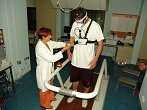


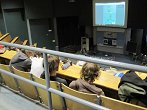

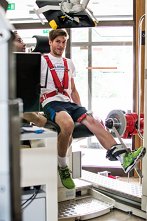








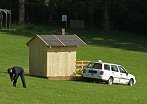


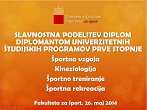


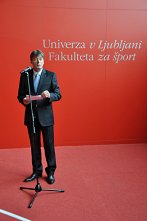

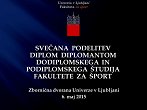






.png)